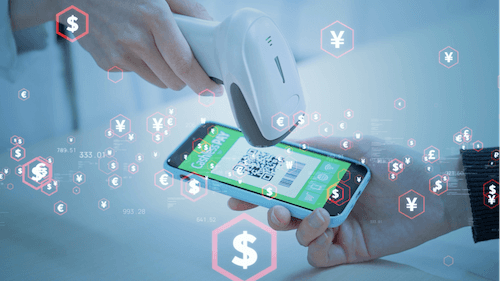Digital Payments: The Shift Towards Cashless Transactions
Research shows that dynamic markets are increasingly attractive destinations for western financial institutions.


The transition to a cashless society has accelerated dramatically in recent years, largely driven by digital payment innovations and the increased demand for contactless transactions during the COVID-19 pandemic. Digital payments, including mobile wallets, contactless cards, and online banking services, are reshaping the global economy, providing consumers with faster, more secure payment options. As we delve into the shift towards cashless transactions, this article explores the factors driving digital payment adoption, the impact of COVID-19 on this trend, and what the future holds for the cashless economy.
The Surge in Digital Payment Adoption
Digital payments have become a core component of daily life, with technology transforming how people send and receive money. This change is propelled by three main factors:
- Convenience and Speed: Digital payments offer unmatched convenience, allowing transactions to be completed in seconds without the need to carry cash or visit physical banks. Mobile wallets such as Apple Pay, Google Pay, and Samsung Pay have streamlined payments, making it easier to pay with a simple tap or scan.
- Increased Security: With advanced encryption and biometric features like fingerprint and facial recognition, digital payments provide enhanced security, reducing risks associated with traditional cash handling. Many digital platforms also offer real-time fraud monitoring, giving consumers peace of mind.
- Financial Inclusion: Digital payments are bridging the gap for the unbanked population, providing financial services to those who previously lacked access. By using a mobile phone, individuals can now participate in the digital economy, enhancing financial inclusion worldwide.
The Impact of COVID-19 on the Cashless Transition
The COVID-19 pandemic acted as a significant catalyst for the adoption of digital payments. During lockdowns and social distancing measures, people turned to contactless and online payments to reduce physical interactions, accelerating the shift towards a cashless society.
- Demand for Contactless Transactions: Health concerns related to handling cash prompted consumers to adopt contactless payment methods, which allow for transactions without direct physical contact. This shift resulted in a surge in mobile payments, with many retailers and service providers upgrading their systems to accommodate the growing demand for contactless options.
- Growth of E-commerce: The pandemic saw a significant rise in e-commerce as consumers relied on online shopping for essentials and services. E-commerce platforms integrated with digital payment options such as PayPal, Stripe, and other payment gateways experienced increased usage, fuelling the digital payment ecosystem.
- Government Support and Regulations: In several countries, governments encouraged cashless transactions, implementing regulations to promote digital payments and ensure safety standards. Some governments even offered financial incentives for small businesses to adopt digital payment solutions, further driving the adoption of cashless transactions.
Mobile Wallets: Driving Cashless Payment Innovation
Mobile wallets have become one of the most popular digital payment solutions, especially among younger, tech-savvy consumers. These wallets offer users the flexibility to store their payment information digitally, enabling transactions at physical stores, online shops, and peer-to-peer transactions. Notable mobile wallet providers include:
- Apple Pay and Google Pay: Widely accepted at many retail locations, these mobile wallets offer enhanced security through tokenisation and biometric authentication, minimising fraud risks.
- Samsung Pay: With its unique Magnetic Secure Transmission (MST) technology, Samsung Pay is compatible with both NFC-enabled and traditional magnetic card readers, making it versatile for a wide range of merchants.
- Alipay and WeChat Pay: In Asia, particularly in China, these wallets dominate the digital payment landscape, offering everything from online purchases to utility bill payments. Their success highlights the potential of mobile wallets to drive a fully cashless economy.
Mobile wallets have not only simplified payments but also paved the way for loyalty programs, digital receipts, and personalised offers, creating an integrated digital experience for consumers.
Contactless Payments: The New Normal
Contactless payments have emerged as the preferred method for in-person transactions. Using near-field communication (NFC) technology, contactless payments allow consumers to simply tap their cards or phones at payment terminals. This method is fast, convenient, and secure, making it ideal for high-traffic settings such as public transport, retail stores, and restaurants. In the UK, for example, contactless payment limits were increased several times during the pandemic to accommodate demand, with similar trends observed globally.
According to recent studies, contactless payments have reduced transaction times by up to 50%, leading to increased customer satisfaction and operational efficiency for businesses. As consumers grow accustomed to the ease of tapping to pay, this technology is set to become a permanent fixture in the cashless society.
The Challenges and Risks of a Cashless Economy
While the shift towards cashless transactions offers numerous benefits, it also presents certain challenges:
- Cybersecurity Threats: The rapid growth of digital payments has attracted cybercriminals, leading to an increase in data breaches and fraud attempts. Digital payment providers continuously improve security measures, but the risk of cyberattacks remains a concern.
- Digital Divide: Although digital payments have promoted financial inclusion, there remains a digital divide. Individuals without access to smartphones, stable internet connections, or basic digital literacy are at risk of being excluded from the cashless economy.
- Privacy Concerns: Digital payments generate extensive data on consumer spending habits, raising concerns about data privacy. Consumers worry that their financial data may be misused, sold to third parties, or exposed to surveillance.
- Dependence on Technology: As reliance on digital payment systems grows, so does vulnerability to system outages and technical issues. A malfunction in digital payment infrastructure could disrupt transactions on a large scale, highlighting the need for reliable and resilient technology.
The Future of Cashless Transactions
The trend towards digital payments is likely to continue evolving, with fintech companies, banks, and governments collaborating to create a seamless cashless ecosystem. Key developments expected in the coming years include:
- Central Bank Digital Currencies (CBDCs): Several central banks, including those in China and the European Union, are exploring CBDCs as a government-backed alternative to cash and private digital currencies. CBDCs could provide a safe, regulated form of digital currency, reinforcing the transition towards a cashless society.
- Expansion of Biometric Payments: As digital payment technology advances, biometric payments using fingerprint, facial recognition, or voice recognition are becoming more common. Biometric technology offers a high level of security and could reduce fraud in digital transactions.
- Blockchain and Decentralised Finance (DeFi): Blockchain technology and DeFi solutions could further enhance digital payment security and transparency. Blockchain’s decentralised structure minimises fraud risks and enables fast, low-cost cross-border payments, making it an attractive option for future digital transactions.
Conclusion
Digital payments are reshaping the financial landscape, driving economies closer to becoming cashless. As mobile wallets, contactless payments, and digital banking become increasingly mainstream, consumers are embracing the convenience and efficiency of cashless transactions. While there are still challenges to address, such as cybersecurity, privacy, and financial accessibility, the trend towards a cashless society appears irreversible.
With continuous technological innovation and the adoption of secure, user-friendly solutions, digital payments are set to define the future of transactions. As governments and financial institutions worldwide support the cashless movement, we can anticipate a financial environment where cash transactions become the exception rather than the norm, heralding a new era of digital finance.